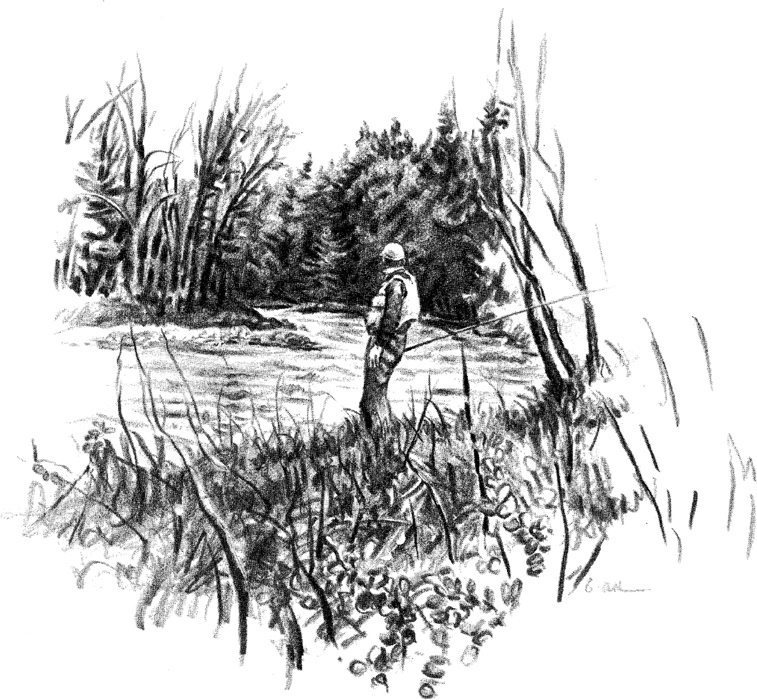



The perfect river does not exist.
It takes a second to write the phrase, twenty years to learn it. The lesson is drummed in every time a fisherman goes out. Plans are planned, hopes hoped, dreams dreamt, and subtly but surely the magic river of our desire begins to flow—a trickle at first, widening to embrace our fondest imaginings, deepening to hold our longed-for trout, eventually carving out a channel that can seem so real and attainable that it dooms all actual rivers to insignificance. No river can match the rivers of our imagination. We stock them with fourteen-inch trout that rise readily to the fly, grace them with abundant shade and gentle breezes, preserve them from harm. There are no dams in our imaginary rivers. No pollution, no highways, no debris. They run unsullied between immaculate banks, our own inviolable preserve.
The river in this book is not imaginary. Were it, I would make some of the pools deeper, put them further from the road, inhabit them with bigger browns and shyer brookies. As beautiful as they are, the trout rivers that flow into the Connecticut in Vermont are not wilderness streams, and the towns that border them have their poverty and trailers and junkyards like everywhere else. Yet the realization that the river is less than my ideal subtracts not one iota from my enjoyment. Perfect rivers being mythical, the fisherman must adjust as best he can, finding what pleasure there is in the reality of it, facing up to the river’s blemishes, trying to right them when he can, not letting thoughts of sylvan streams just beyond the horizon torture him into false comparisons. “Here I will begin to mine,” Thoreau said, knowing that truth was as attainable in the woods around Concord, Massachusetts, as it was in the cities of Europe or the mountains of Tibet. It is with this same determination that I have decided to write about what the river has come to mean to me.
Readers familiar with Vermont will have little trouble identifying my river. If I have left it nameless, it is not for protective secrecy but because to me it stands for the dozen New England rivers I have come to know in twenty years of sometimes hard, sometimes casual fly fishing. Indeed, so similar are their qualities that my river could well be the epitome of them all, could actually be part of the same overlapping flow, making it seem as though I have been slowly fishing up the rest of them toward it all along. Vermont’s Battenkill or New Haven, Grand Lake Stream in Maine, Connecticut’s Housatonic, the Quashnet of Cape Cod . . . this book might have been written about any one of them, and there is not a memory or observation in these pages that didn’t have its germination on one of their banks.
This book covers a year on the Vermont river I love. Mostly it deals with fishing, sometimes with the absurd, humorous aspects of the sport. Little advice will be found here. I am a writer first, not a fisherman, and the insights I am after have little to do with catching more trout.
Fly fishing is a discipline that in sensitive hands can account for a special perspective, putting its practitioners by its very nature into a closer, more harmonious association with the river they fish. When the fly fisherman goes empty-handed to the river, merely to sit and watch, he notices half the incidents and events he would notice if he brought a rod, the concentration fly-fishing demands being the price of admission to the intimacy he’s after. Novelists are aware of the mysterious process by which the hidden truth of a situation or character often comes unbidden at the typewriter, revealed only in the act of being written down. So too with fly-fishing: the truth of a river comes in fishing it. Merge the fisher and the writer, merge the river and the word.
The perfect river does not exist. My Vermont river does. Here then, its exploration.